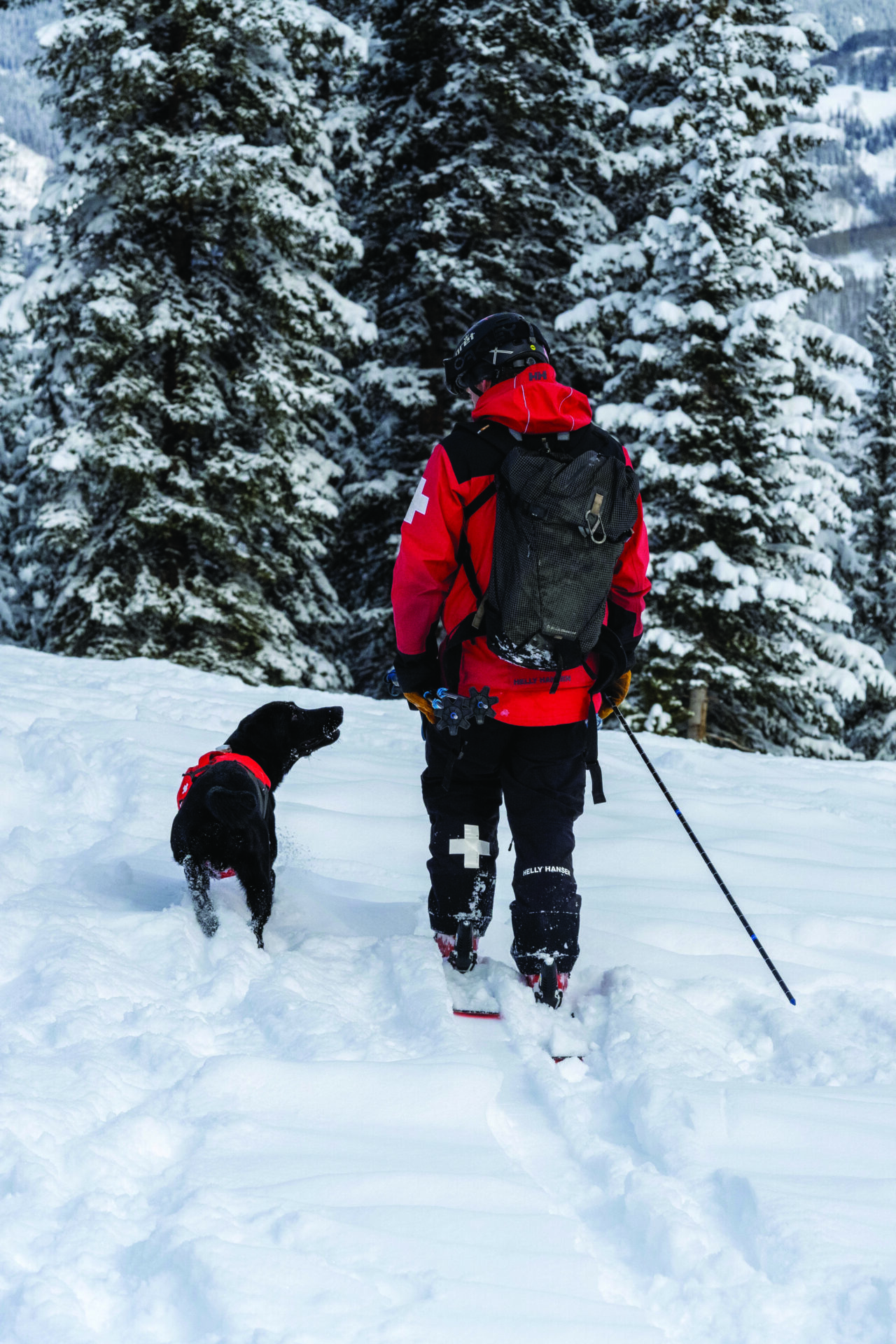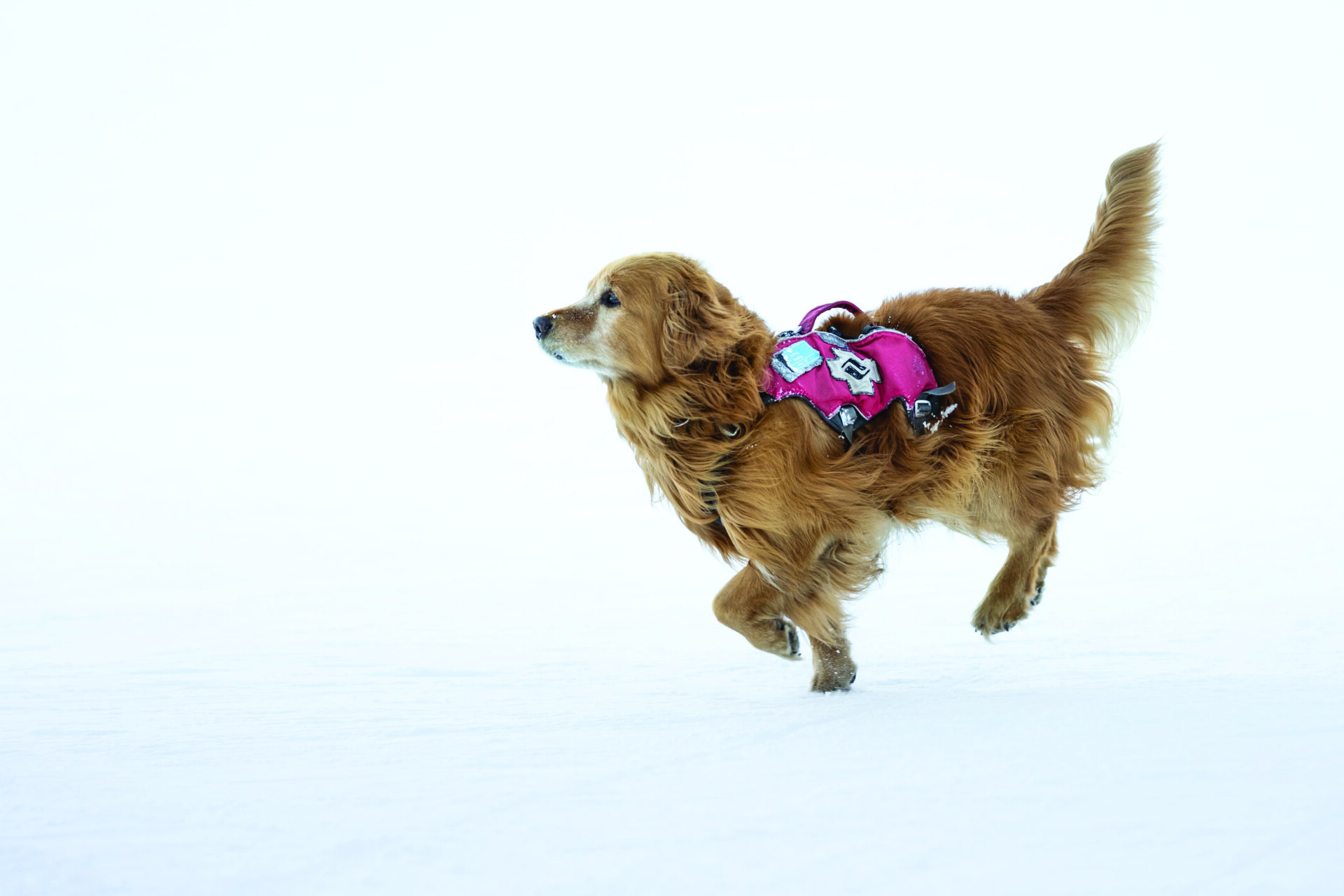There’s nothing quite like reaching the top of the lift and seeing a happy dog in a red vest. A combination of pure joy and a sense of safety fill you up. Not only do these dogs provide a feeling of comfort on the mountain, but they also are highly skilled and possess an immeasurable amount of training.
The Vail Avalanche Dog program has been in existence since about 2008. Chris Reeder, who is currently director of Ski Patrol at Vail, created the program back in the early 2000s with his avalanche dog, Henry. That program now spans across Vail and Beaver Creek, connecting eager handlers with their canine companions. Currently Reeder is managing the day-to-day logistics of running a dog program: scheduling training days, shifting staff around to fill the place of handlers who may have to step away from their duties to attend training classes and coordinating the program as a whole. After retiring and living to 15 years old, Henry filled his days with short walks and long naps. He sadly passed away in the fall of 2022, but Henry will always reign supreme as the first-ever Vail Mountain Avalanche Dog.

Photos by Sam Bryson
Training a dog from puppyhood is not a simple feat, especially when the dog is required to carry out a specific task in the end. When it comes to selecting the dog for the task, Vail and Beaver Creek seek out Golden Retrievers and Labradors with strong bloodlines, particularly for their well-bred genetics and natural drive to search, retrieve and please. “There’s lots of breeds that can do the avalanche rescue job well, but labs and goldens also do the public service job especially well,” explains Reeder. Vail SAR dogs work on the mountain to perform rescue tasks as needed, but a huge part of their job is connecting to the community, too. Whether that be greeting guests in common areas or going into local schools to educate students on avalanche and snow safety, the dogs have to be well-rounded and approachable.
“I feel like the dog introduces people to not only what they’re doing but to what we’re doing, as well,” adds Toby Harrison, first-year handler at Beaver Creek. “We get to talk about our avalanche mitigation, our training and the responsibilities people don’t think about. She’s a good ambassador, and it opens the conversation to talk to people about how we keep everyone safe.” Harrison’s dog-in-training is Ruby the lanky, adorable, black lab with a fantastic temperament and a drive to please, all the makings of a solid avalanche dog.
Vail and Beaver Creek supply their handlers with a multitude of training resources. “We try to expose the handlers to as much trainer variety as possible, so they can pick and choose what works in our environment here,” states Reeder. Each season, dogs and their human counterparts travel to seminars around the country, and sometimes into Canada, to learn from the best. For dogs to be officially validated, they have to meet and pass the standards set by Colorado Rapid Avalanche Deployment (CRAD).
“Our goal is to have three validated dogs at any time on the staff. There are typically two pups that are working towards their validation, and then we usually have a couple dogs that are already retired but are still coming to work two days a week,” explains Reeder. Dogs usually get validated around age two and retire around nine or ten. In the early stages of training, the focus is on exposure to the environment, enjoying puppyhood and general obedience.
“Right now, we’re keeping things fun and inviting. Continuing to build and boost their drive. The early stages are a good time,” Gavin Mastell happily shares, with his rescue dog-in-training, Telli the golden, sitting in his lap. Mastell grew up with hunting dogs in Oklahoma and has loved the experience he’s built and will continue to build on patrol, especially with Telli. Mastell and Telli have a unique experience entering this season. Telli’s littermate, Moxie, is also training to be an avalanche dog at Vail with her handler, John Alfond. Alfond is an experienced handler heading into his 15th season on ski patrol.
When speaking with Reeder about the execution of the rescues, he brought up a crucial misconception that people make. When the trio of dog, handler and avalanche tech are deployed to an avalanche site, they are often in search of a recovery, not a rescue. A myriad of emotions flow when a recovery is successful; the dog is ecstatic, because they’ve completed their task, and the rescuers involved are experiencing emotions on the opposite end of the spectrum. Having a canine companion to assist in the mission is immeasurably valuable but adds its own set of in-the-moment challenges.
“One of the things that is always kind of surreal on a rescue is when you’ve found someone and the dog has done its job. You always have to make sure the dog is rewarded properly, regardless of how everyone’s feeling and what the nature of the event is with those around you,” says Reeder. This speaks volumes to the challenges that come with being on ski patrol and a part of rescue teams. The job can be extremely rewarding and simultaneously heartbreaking. Reeder reminds us to have a plan A in the backcountry so that plan B, the rescue teams, don’t have to be deployed.
Behind every great avalanche dog is an even better handler who took the time to build the foundation and create a deep working bond with their four-legged companion. Whether the working dogs of Vail and Beaver Creek are greeting guests, making recoveries or anything in between, it’s important to acknowledge how much of an asset they are to the safety of our community.
Follow @vail_avalanche_rescue_dogs on Instagram for more.

